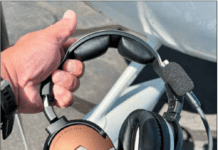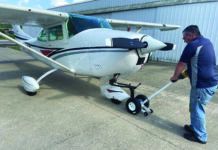Two questions about LED landing lights: Are they brighter than ever and, if so, is it worth upgrading if you bought one five years ago? Two answers: Yes and no.
LED technology continues to advance incrementally and the lamps we examined are both measurably and visibly brighter. But what they are not is cheaper. If you’re slumming around with an old GE 4509-the industry standard landing light-the cheapest LED replacement will cost six to 15 times as much.
But, hands down, it will be brighter and is likely to last essentially forever. In this report, we tested some of the lamps we examined four years ago and one newcomer to the market. Two product lines-Teledyne’s Alpha Beam and Aveo’s line of premium lamps-weren’t available at the time of our trials, the latter because the company is in the midst of yet another upgrade cycle.
Constant Improvement
In virtually any market segment requiring lighting, LEDs have achieved significant if not dominant market penetration. The automotive lighting market alone is worth $20 billion and although incandescent lamps still retain a commanding lead for household use, the LED market continues to grow.
This economy of scale has put upward pressure on volume, downward pressure on pricing and competitive pressure to improve LED efficiency and longevity. In new aircraft, LED landing lights are all but standard, as are LED position and and strobe lights. The aftermarket remains a mixed bag. A survey of any ramp will find a smattering of LEDs, but a bunch of old GE 4509s. That the retrofit market is small is indicated by the small number of players-about six. As we went to press in February, that dropped by one when Whelen announced that it acquired LoPresti Aviation’s entire line, including the recently formed Illumivation for LED products. The new combined entity is called Whelen Aerospace Technologies. Most of these companies have some tilt toward large commercial and military applications because, well, that’s where the profit is.
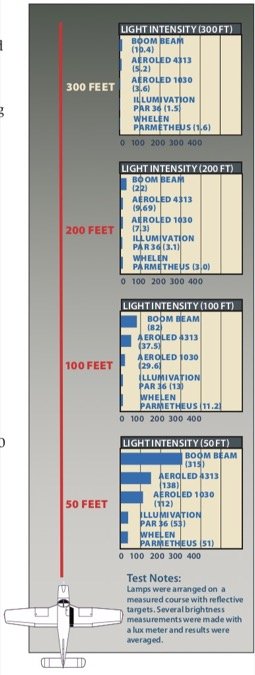
Small volume and evolving technology make the LED landing light biz challenging, according to Nate Calvin, of AeroLEDs, one of the best-known manufacturers. All of the companies tell us that they face a constantly changing landscape of new or at least improving LED technology and sometimes that’s easy to incorporate into new products, sometimes not.
Calvin said the LED improvement cycle from manufacturers can be as little as a year. “You might start the year with parts that are 160 lumens per watt. By the end of the year, it’s not uncommon to see 168 or 175,” Calvin says.
At Whelen Engineering, Jeff Argersinger says the product cycle isn’t necessarily predictable. “We’re constantly in a redesign flux. LED improvement is only one factor and LED intensity is not the only consideration,” he says. “The ability to focus the LED is very important. Current draw versus intensity is very important, as the assembly is somewhat thermally constrained. Cost, delivery, reliability, testing are all factors in the decision process,” he adds.
How Bright?
Obviously, brightness is an important consideration, but it’s not the most important one. As LEDs get ever brighter, smaller and more efficient, lenses and housings have to be redesigned to shape or collimate the light into something usable for aircraft applications. And here an important disclaimer: Raw candelas, lumens or candlepower doesn’t really mean much, as we found in our brightness trials.
“You maybe think that 100,000 candela is good and 500,000 would be awe
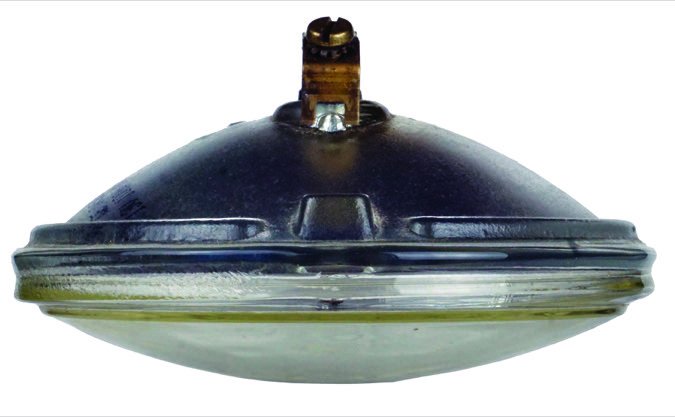
some. How about 3.5 million? Well, that’s a laser pointer. How about lumens? An incandescent bulb is 1500 lumens, a nice big number. But try to land behind it,” says Calvin.
Whelan and AeroLEDs say the magic sauce is how the beam is focused and shaped. Legacy lamps-the GE 4509-tend to be narrowly focused so they have good throw, but offer little peripheral illumination for taxiing. And that’s why you missed the taxiway sign or turn at night. LED manufacturers can address this by designing lenses that trade throw distance for a wider beam.
“There’s no standard for what it has to be. Legacy bulbs are about a five-degree angle. So if you take the peak candela and move out of that until it’s 10 percent, it’s about five degrees, 10 degrees total. We’re about double that-10 degrees or 20 degrees total. We do that purposefully to widen up that field of view. Our view as pilots is that you’re
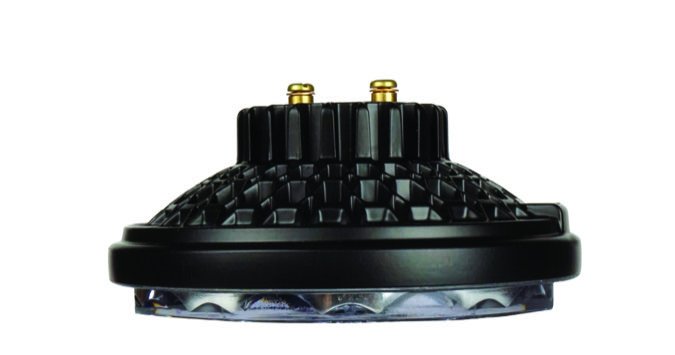
sacrificing the width of the beam for that center profile,” Calvin says.
Does this suggest that there’s really no longer any meaningful distinction between taxi and landing light bulbs? That’s exactly what it means.
“In 10 years of talking to pilots, I’ve had them say, “well, I need a landing light and a taxi light.’ And I say before you do that, buy two landing lights and if you feel it’s not wide enough, I’ll exchange it for free,” Calvin says. He’s had zero takers.
Making Them Last
There’s a reason 4509 bulbs cost as little as $12. They have a filament, a reflector, a housing and some terminals. But LEDs have many dozens of parts because the LEDs themselves are mounted on a board
that’s also populated with chips to regulate temperature and, by extension, light output. “The biggest enemy is the junction temperature. If you’re running that too hot, it’s going to kill it,” says Whelan’s Argersinger. “Every manufacturer has a different type of design. There may be the mindset to say, let’s just drive these things as hard as we can to get the most light out of it, knowing that they’re going to be mounted on the nosegear of a King Air, so there’s going to be cooling involved,” he adds.
But an LED selling point is longevity. Whelan, for instance, specifies 10,000-hour lamp light backed by a five-year warranty. Keeping the LEDs alive is a tradeoff between driving them hard enough for good brightness, but well short of frying the junction. Manufacturers do this is varying ways.
Whelan, for instance, uses circuits that provide constant current to avoid over temping. AeroLEDs actually has a thermistor on its LED boards. “It has resistance that’s a function of temperature and it’s saying hey, I’m at this temperature, then I’m going to be at this output,” Calvin says. LED manufacturers also build durability into their products by wiring the LEDs in isolated series. “In some, if one fails, it will take only one out. In most of the lights, we do it in groups in two. If we have eight LEDs, and one dies, it takes only another one with it. You’d have to lose half the light to see any performance difference,” Calvin says.
One thing we noticed during testing is that LED lamps don’t get nearly as hot as the GE 4509 and we have some burned fingertips to prove it. But that’s not to say the LED junction isn’t getting warm.
“It wasn’t that long ago, they couldn’t even make a white LED that stayed white. They turned pink as they heated up. Now they’re very color stable. And a lot of them are getting smaller, so you’re getting the same light output and you can populate the lamp with more to get more light. But more heat, too, and you’re limited by the geometry of the lamp housing,” says Whelen’s Argersinger.
Product | AMPS | Price | Applications |
teledyne alphabeam | 3.75 | $325 | Approved PAR 36 drop-in replacement for common lamps. Newest version not available for testing. (www.aircraftspruce.com) |
aeroleds 36 LX 1030-L-A | 3.75 | $349 | PAR 36 drop-in replacement. Top pick for value versus performance. (www.aeroleds.com) |
AEROLEDs 4313 | 6.7 | $650 | Higher output PAR 36 replacement lamp. Tested noticeably brighter. |
AVEO Hercules part 36 drop-in | 4.2 to 10.5 | $845 | Not available for testing for this report. Lamp uses up to 30 LEDs and has variable output for combination landing and taxi. (www.aveoengineering.com) |
illumivation LAZR par36 | 1.8 | $699 | New entry to the LED market. PAR 36 and 46 models offered for most GA aircraft. |
whelen | 1.2 | $227 | Approved PAR 36 lamps for landing and taxi applications. (www. flywat.com) |
This list doesn’t include all lamp options available in any type, but gives an overview of price and application comparisons. Check with vendor for specific prices on the model aircraft you’re interested in. Some manufacturers offer combination landing/taxi/wigwag features. | |||
Out on the Range
Our goal in this round of testing was to determine if the latest generation of LEDs are measurably brighter than the previous versions and whether this makes any difference in what matters: how well the lamp illuminates what’s ahead.
Our testing range consists of four reflective markers set at 50-, 100- and 200-foot intervals. We took an additional brightness measurement at 300 feet but couldn’t place a marker because of an active taxiway. Brightness was measured with an ExTech lux meter at each reflector station. We fished the sensor around to find the brightest point in the beam and averaged the results.
A word here about lux as a unit. A lux is light energy in which area is taken into account, usually a square meter. One lux is equal to one lumen per square meter. Lux can be converted to lumens or candela, but for our comparative purposes, lux is sufficient since all the measurements were made consistently.
We would call our findings mixed. In the two apples-to-apples comparisons, we saw what we expected to see for the AeroLEDs lamps. The $349 Sunspot 1030-L-A-claimed 65,000 candela-was indeed slightly brighter than the last time we tried it, throughout the range of measurements. Last time, we measured 100.7 lux at 50 feet, while the new lamp measured 112.
The more expensive Sunspot 1030-4313-150,000 candela for $650-was, as expected, brighter than the cheaper lamp. It showed 138 lux at 50 feet.
The surprise was the $227 Whelen Parmetheus Plus, the latest version. The previous model measured a respectable 65 lux at 50 feet, but this time it scored only 51, despite being a newer generation. We asked Whelan for another sample, which yielded the same results. At about 66,000 candela, Whelan says the latest lamp is 40 percent brighter than the previous model.
When we contacted the company about our test results, they said there are two possibilities. One is that the sample provided was shy on output, but more likely, the lux meter we were using couldn’t find the high-intensity center of the beam. We intend to repeat the testing with more averaged measurements for a follow-up.
In the meantime, without the old lamp for direct comparison, we can’t say if it appears brighter. A customer on the Aircraft Spruce site did compare them side-by-side and thought the newer model was “a bit brighter.” Side-by-side with the AeroLEDs 1030-L-A, the former appears a little brighter, but perhaps not so much that a half-dozen people looking at it would draw the same conclusion. This squares with AeroLEDs’ Nick Calvin’s explanation that it takes nearly a 40 or 50 percent drop-off in light intensity to notice a definite change.
We also looked at two lamps-a PAR 36 and a PAR 46-from a new comp
any called Illumivation. It’s a subsidiary of LoPresti Aviation which, heretofore, has specialized in HID aircraft lighting.
Illumivation’s PAR 36 ($699) measured less bright than the Sunspots from AeroLEDs, but on the ramp, we noticed that it had a wider beam so it would make a slightly better combined taxi/landing light than the Sunspots. Even with the wider beam, its throw was impressive.
As we’ve reported before, standard incandescent landing lamps tend toward narrow, hot beams whose yellowish color flattens contrast, making it more difficult to see centerlines and, especially, taxiway centerlines faded by age and weathering. LEDs, on the other hand, tend toward cooler blue or even white. This improves contrast and makes all objects and colors more visible at night when taxiing or landing. As is plainly obvious in the accompanying video, the LED/incandescent side-by-side comparison is simply no contest. Even the measured least-bright LED, the Whelan Parmetheus Plus, crushes the GE bulb with higher perceived brightness
and better contrast.
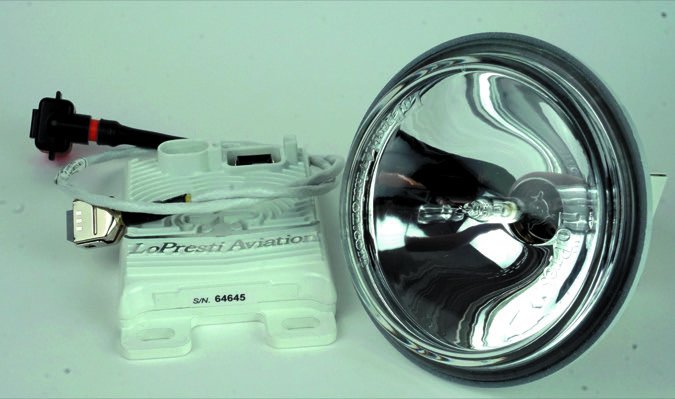
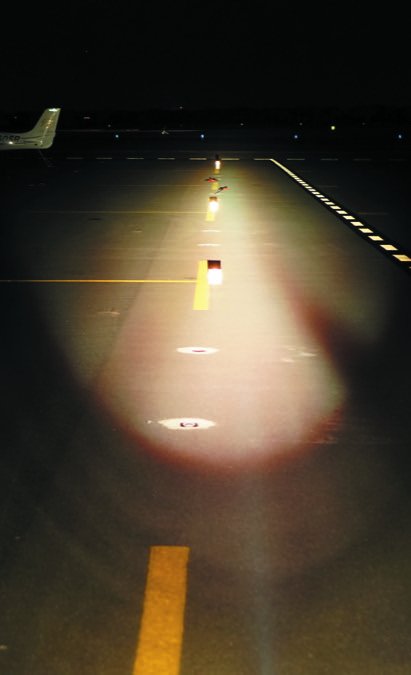
Not exactly, but as LED performance has improved and even with midrange lamps selling for $600 or so, it’s a hard sell for light aircraft. “Many operators, especially with older assets, find that the HIDs do come at a higher cost, both to install and to purchase. We found we were missing some opportunities compared to AeroLED and Whelan and some of the other brands,” says Jayde Machado of LoPresti Aviation.
LoPresti pioneered HID for aircraft with its Boom Beam product. But to compete with the LED onslaught, it formed a subsidiary called Illumivation about two years ago. The company markets a premium line of LEDs for aircraft of all sizes.
But the Boom Beam is still available for light airplanes, albeit pricey at between $2000 and $2500 for a single or twin. Installation is not overwhelming, but has to accommodate wiring and a ballast, which LEDs don’t need. But the performance is no contest. HIDs blast a bright, focused beam practically the length of the runway. That would be a plus for serious outback flying at night, but otherwise, an LED will do for less money.
Recommendations
As aviation gadgets go, LEDs are only expensive when compared to old-school incandescents. Yes, $600 or more for a landing light is a lot of money, but, in our view, there’s value in the performance of seeing better for landing and taxiing and improved conspicuity by turning the light on and leaving it on. There’s every indication that LEDs are essentially lifetime bulbs and will always be available when you need them some dark and stormy night.
When we last reviewed LEDs four years ago, we recommended the AeroLEDs Sunspot as the top pick and we’re repeating that advice. At $349, the 1030-L-A is a high value combination of price and performance. For a budget choice, you won’t go wrong with the Whelan Parmetheus Plus at $227. It’s not as bright as the Sunspot or the Illumivation, but it gets the job done.
If you bought an LED five years ago, the newer technology is definitely brighter, but not so much better that it would be worth replacing an older lamp, in our view. We also second Nate Calvin’s recommendation to install two landing lights rather than one landing and one taxi in aircraft that accommodate two lamps.
Also worth considering are the LED models that include flashing wig-wag functions. Always-on lamps greatly enhance daytime conspicuity and wig-wags help further.



